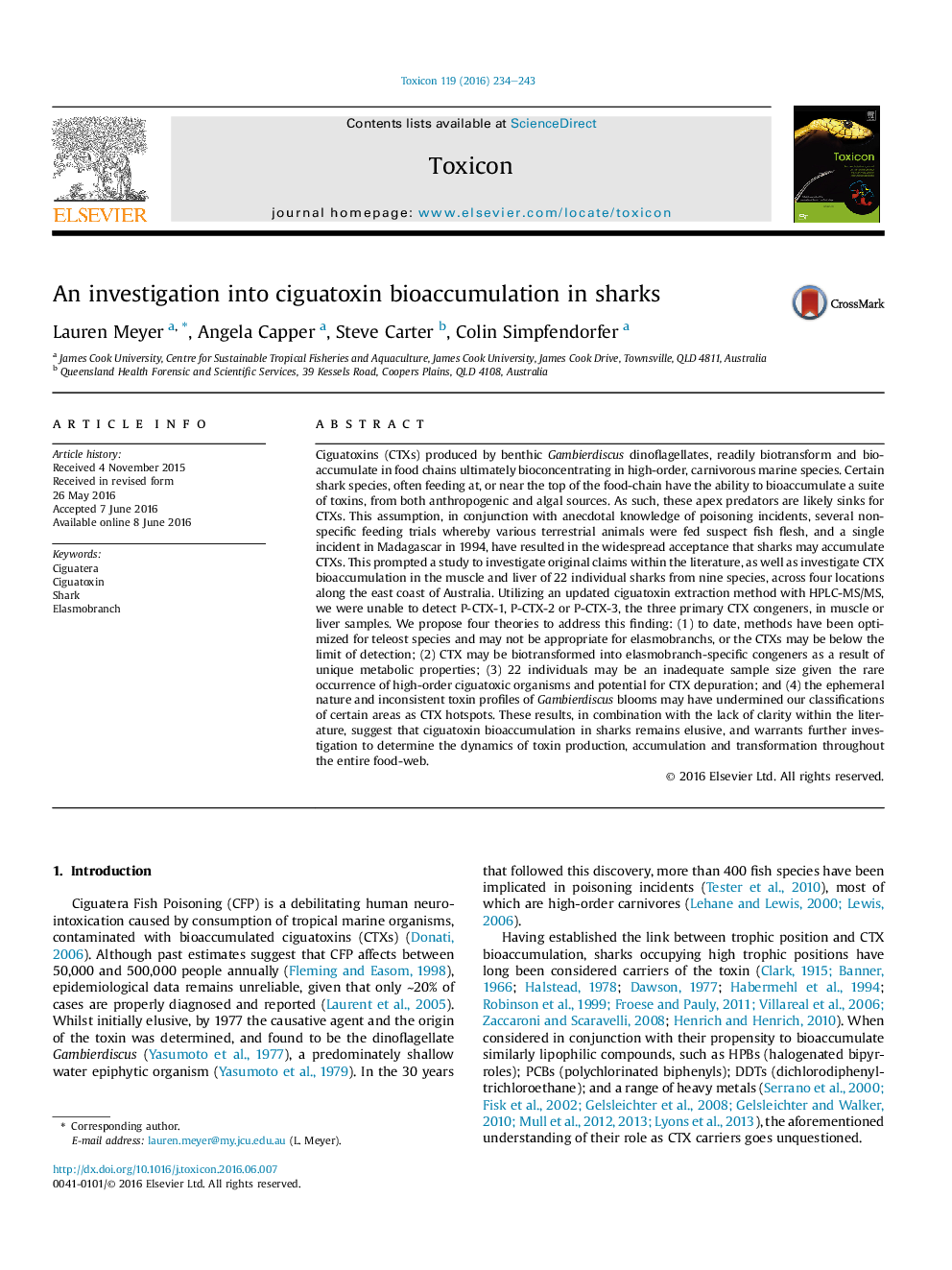| کد مقاله | کد نشریه | سال انتشار | مقاله انگلیسی | نسخه تمام متن |
|---|---|---|---|---|
| 2064012 | 1544117 | 2016 | 10 صفحه PDF | دانلود رایگان |
• Historic recorded incidences of ciguatoxin bioaccumulation in sharks remain biochemically unconfirmed.
• 22 sharks from Australia’s east coast did not contain detectable levels of ciguatoxins.
• Our understanding of CTX accumulation in sharks warrants reconsideration.
Ciguatoxins (CTXs) produced by benthic Gambierdiscus dinoflagellates, readily biotransform and bioaccumulate in food chains ultimately bioconcentrating in high-order, carnivorous marine species. Certain shark species, often feeding at, or near the top of the food-chain have the ability to bioaccumulate a suite of toxins, from both anthropogenic and algal sources. As such, these apex predators are likely sinks for CTXs. This assumption, in conjunction with anecdotal knowledge of poisoning incidents, several non-specific feeding trials whereby various terrestrial animals were fed suspect fish flesh, and a single incident in Madagascar in 1994, have resulted in the widespread acceptance that sharks may accumulate CTXs. This prompted a study to investigate original claims within the literature, as well as investigate CTX bioaccumulation in the muscle and liver of 22 individual sharks from nine species, across four locations along the east coast of Australia. Utilizing an updated ciguatoxin extraction method with HPLC-MS/MS, we were unable to detect P-CTX-1, P-CTX-2 or P-CTX-3, the three primary CTX congeners, in muscle or liver samples. We propose four theories to address this finding: (1) to date, methods have been optimized for teleost species and may not be appropriate for elasmobranchs, or the CTXs may be below the limit of detection; (2) CTX may be biotransformed into elasmobranch-specific congeners as a result of unique metabolic properties; (3) 22 individuals may be an inadequate sample size given the rare occurrence of high-order ciguatoxic organisms and potential for CTX depuration; and (4) the ephemeral nature and inconsistent toxin profiles of Gambierdiscus blooms may have undermined our classifications of certain areas as CTX hotspots. These results, in combination with the lack of clarity within the literature, suggest that ciguatoxin bioaccumulation in sharks remains elusive, and warrants further investigation to determine the dynamics of toxin production, accumulation and transformation throughout the entire food-web.
Journal: Toxicon - Volume 119, 1 September 2016, Pages 234–243
